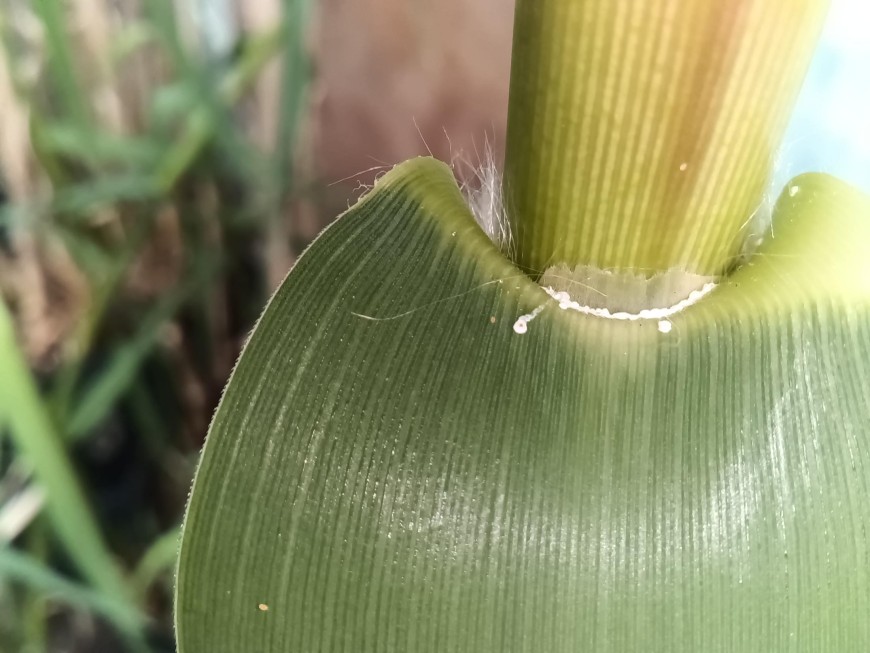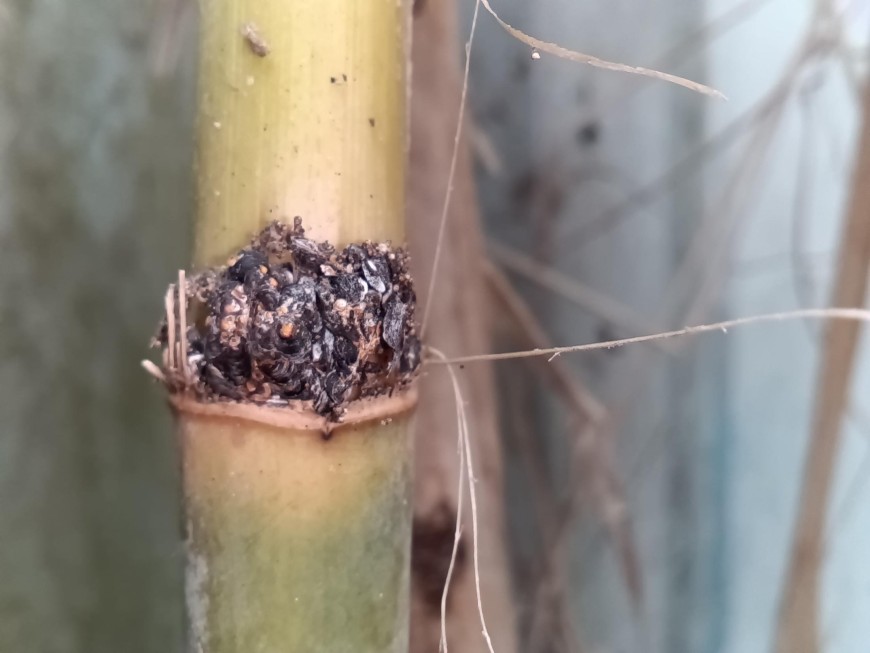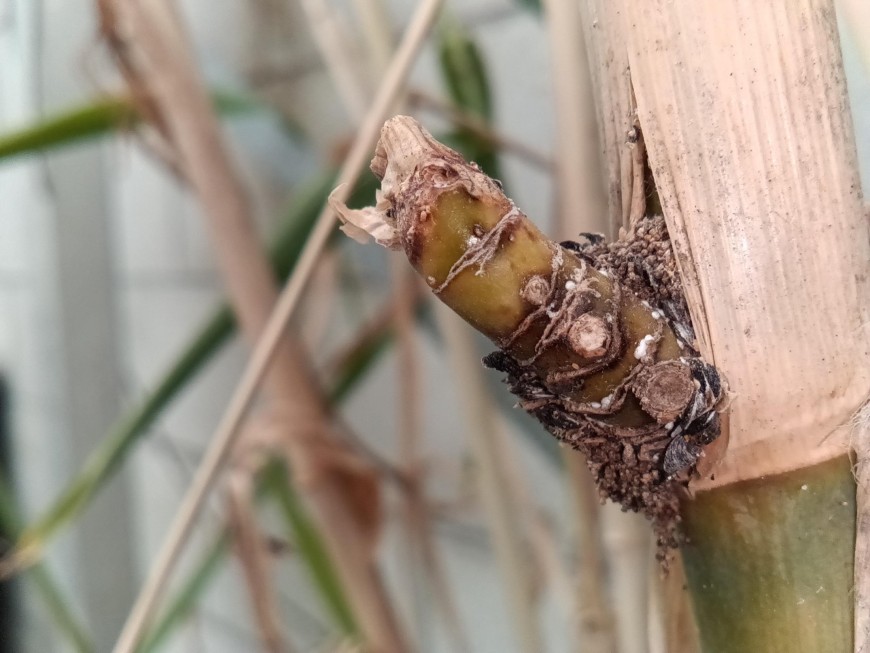Giant reed scale
History in New Zealand
The giant reed scale insect is native to the Mediterranean region. It was first imported into containment in New Zealand for study in 2015 by Manaaki Whenua- Landcare Research. Permission to release the scale was granted by the EPA in early 2017. The first field release was made in 2021. Releases of the giant reed scale began in the USA in 2010. A gall wasp (Tetramesa romana) was also approved for release in New Zealand and is expected to complement the activity of the scale insect.
How would I find/recognise it and what is its lifecycle
Giant reed scales are usually hidden in the leaf sheaths, especially at the nodes and on developing shoots and rhizomes growing underground. Past attack is often revealed when nodes die and shrivel revealing old scales.

Image: giant reed scale.

Image: giant reed scale.
How does it damage giant reed?
After a short-lived mobile ‘crawler’ stage, scale insects settle down, become immobile and feed on sap using piercing mouthparts. They protect themselves by secreting a brown waxy coating. Large numbers of scale insects often cram themselves together killing nodes and stunting growth.

Image: giant reed scales accumulating on a giant reed node
Will it attack other plants?
No, the scale will only attack giant reed plants.
How effective is it?
Research in the native range indicated that the giant reed scale reduced shoot growth by half. Its impact could potentially be greater in New Zealand, where parasitoids that attack the scale are absent.

Image: giant reed scales on a giant reed shoot.
How can I get the most out of it?
The scale has not been widely released. Further releases throughout giant reed infestations are needed.
How do I select a release site?
Read Guidelines for selecting release sites for biocontrol agents.
How do I collect it for release at other sites?
Stem sections containing infested nodes can be cut using secateurs and transported to other sites where they can be planted within an infestation or tied to uninfested plants to allow crawlers to disperse.
How do I manage the release sites?
Avoid any activities that will interfere with the scale insect, such as herbicide application. If you need to undertake control measures, then avoid the release site.


